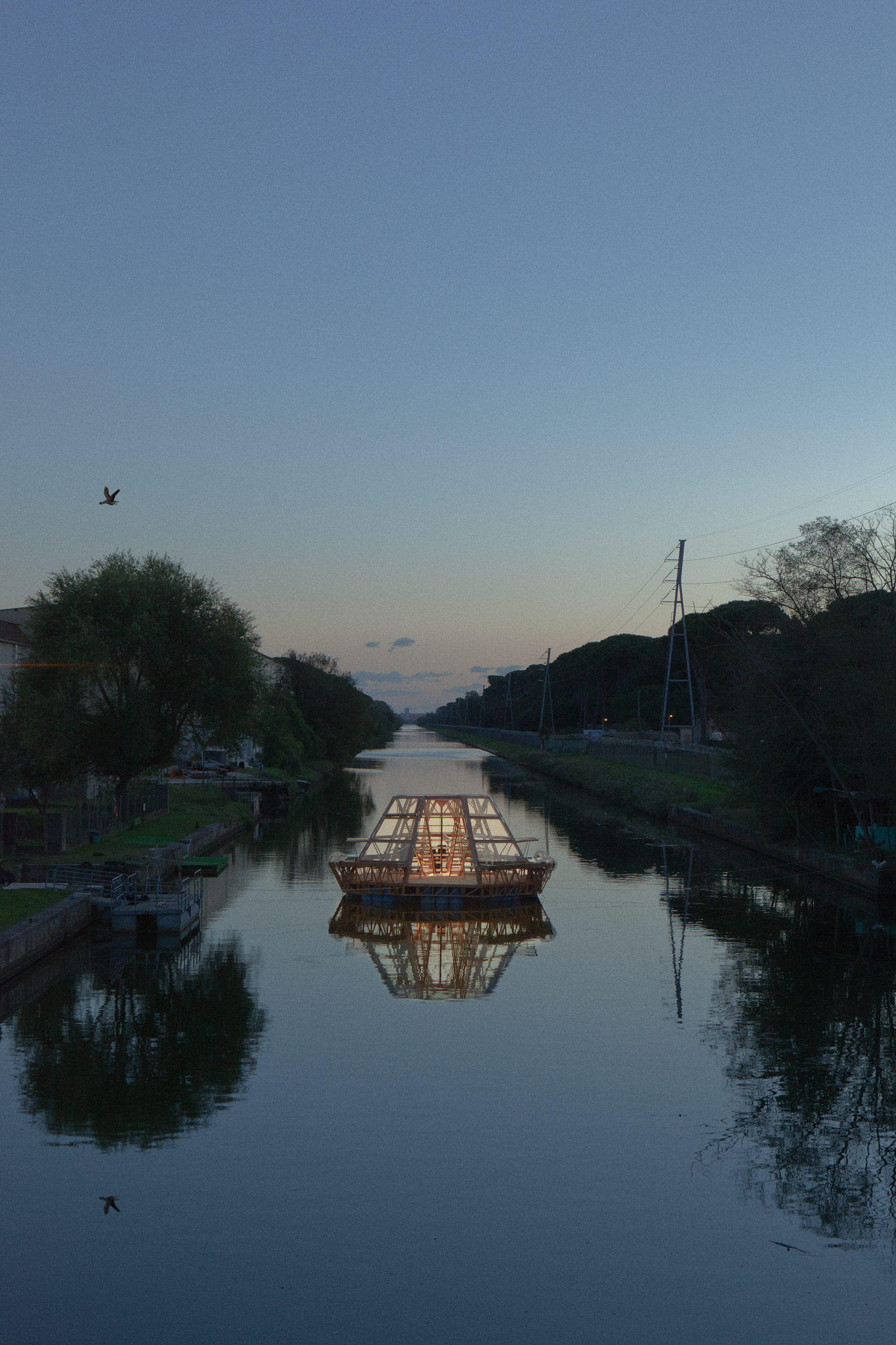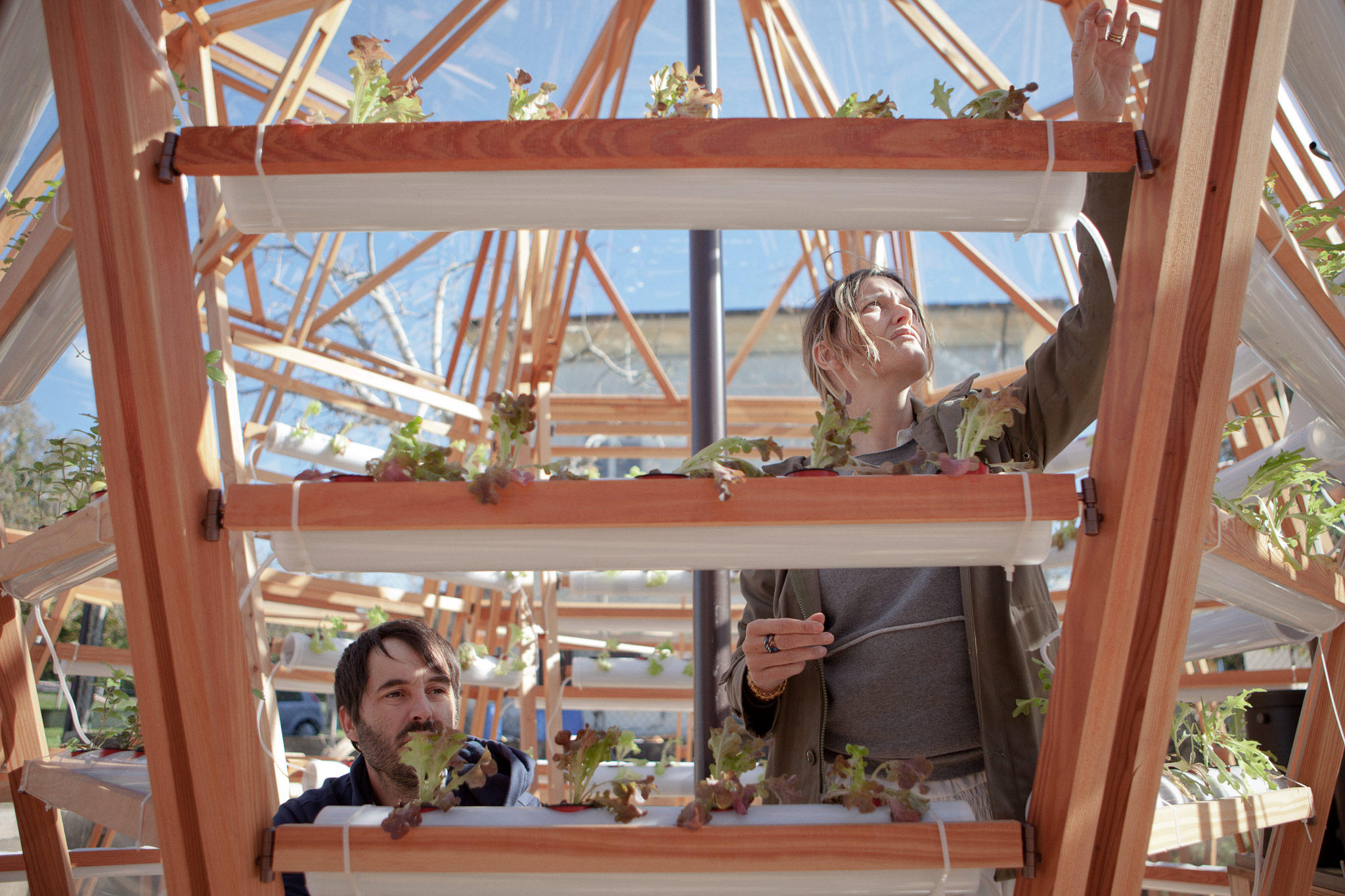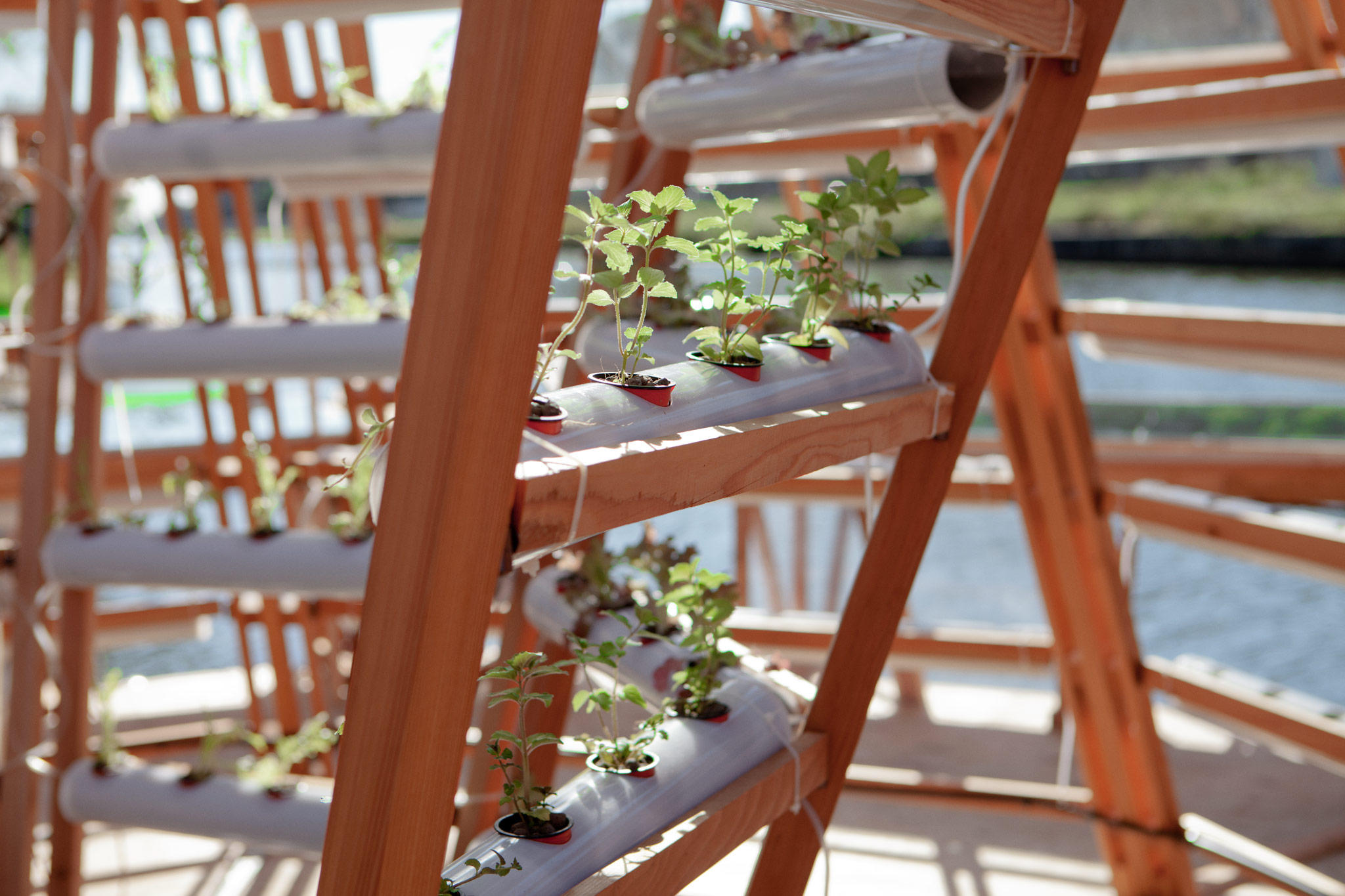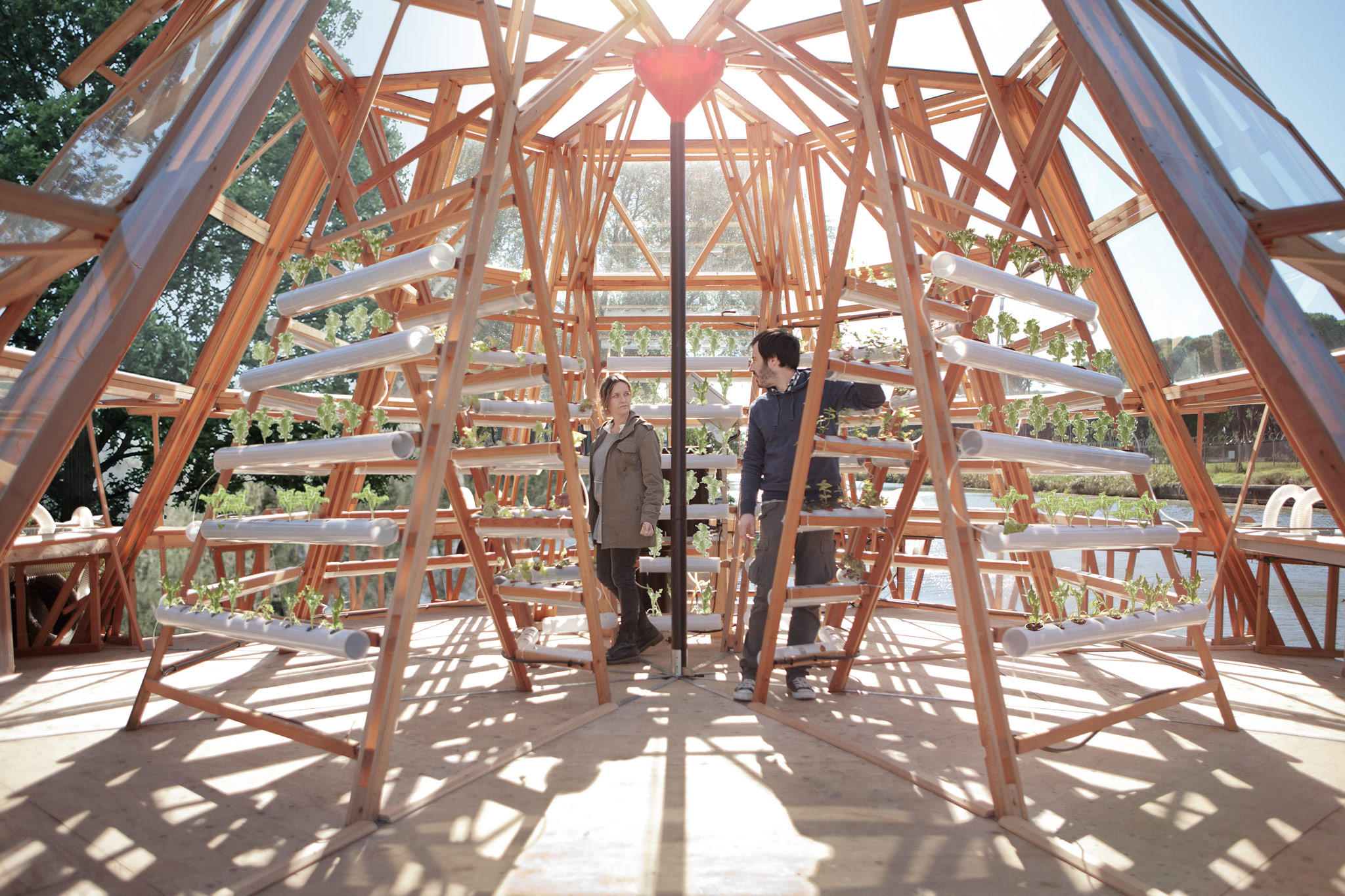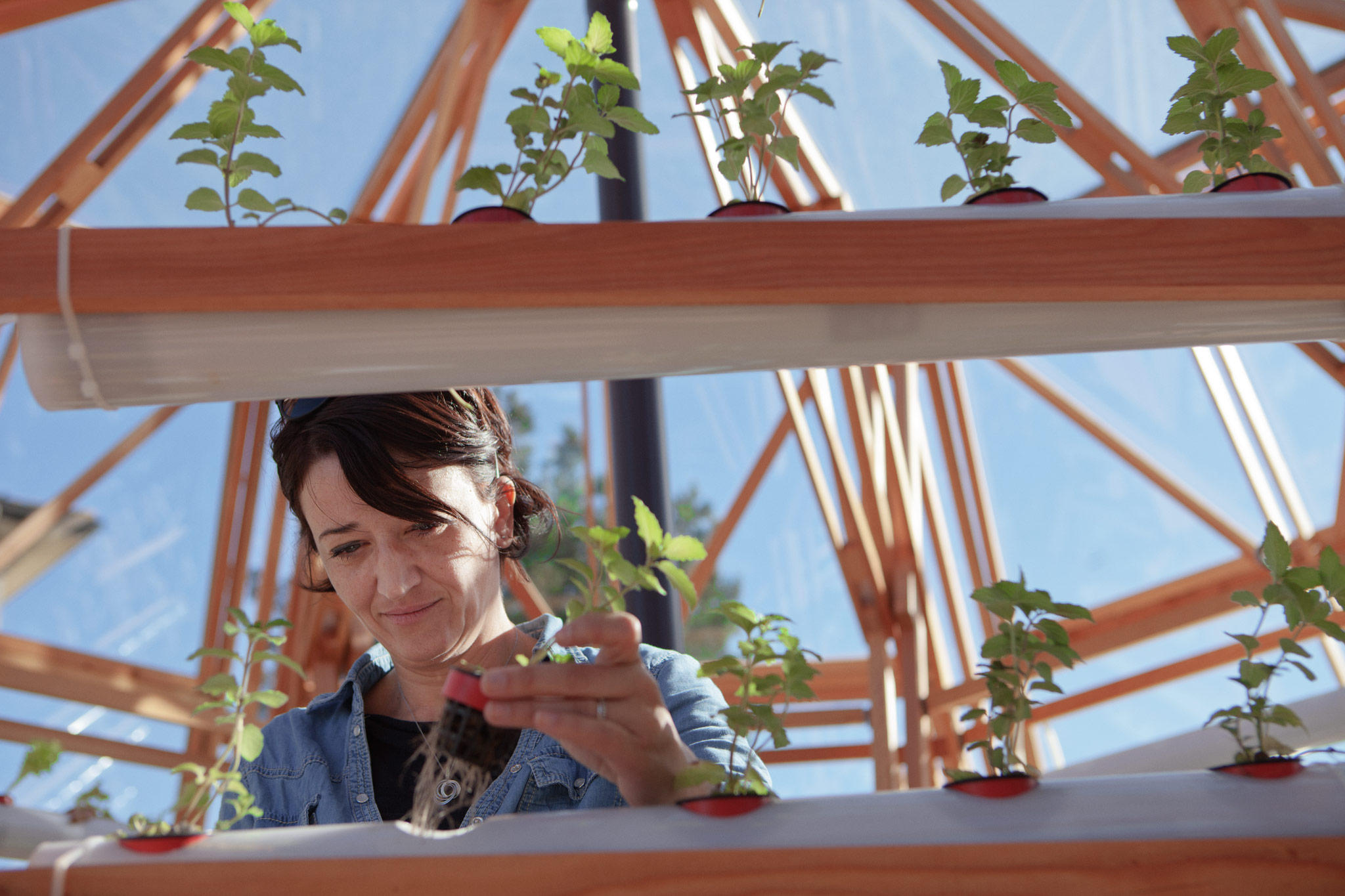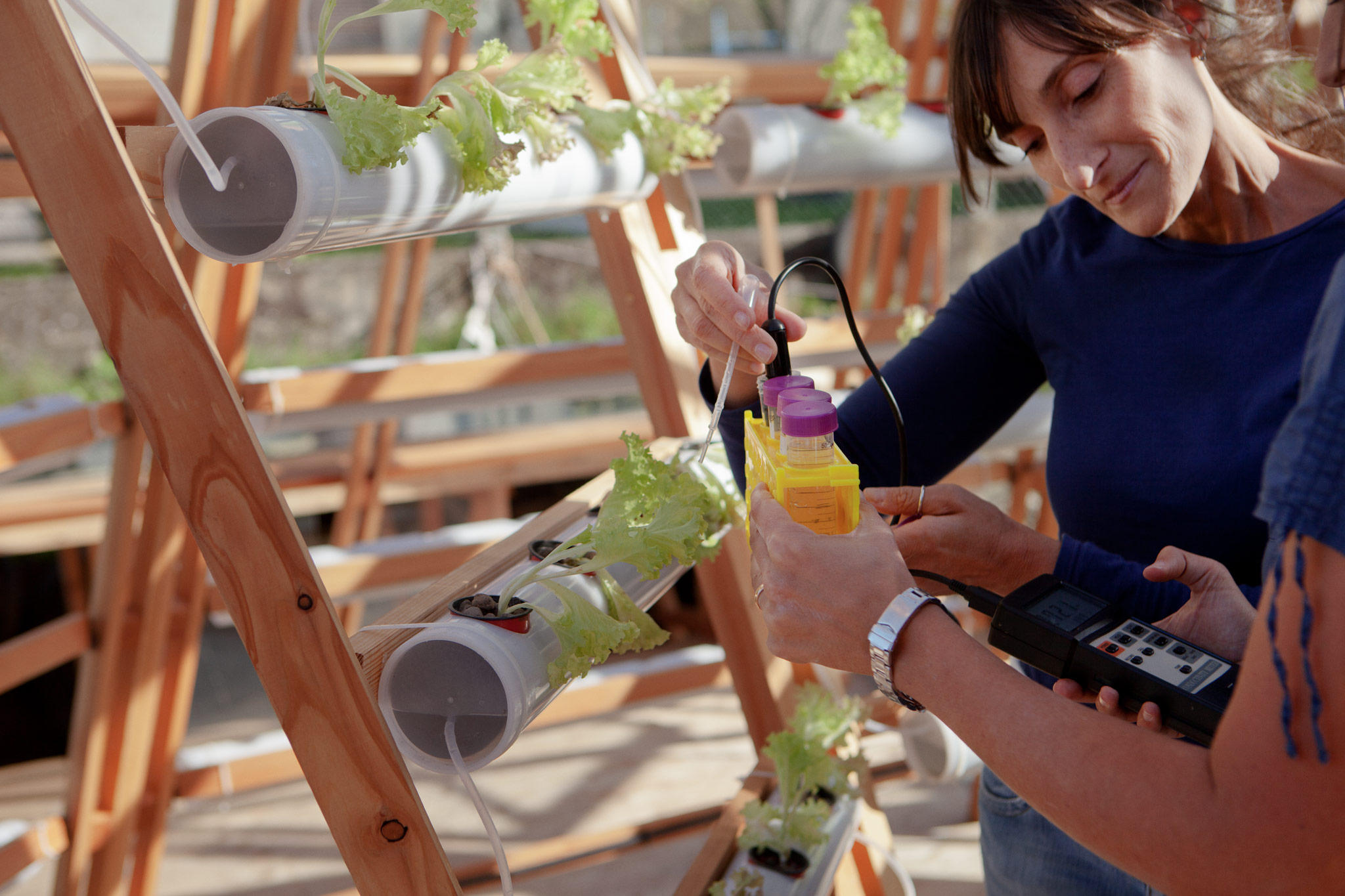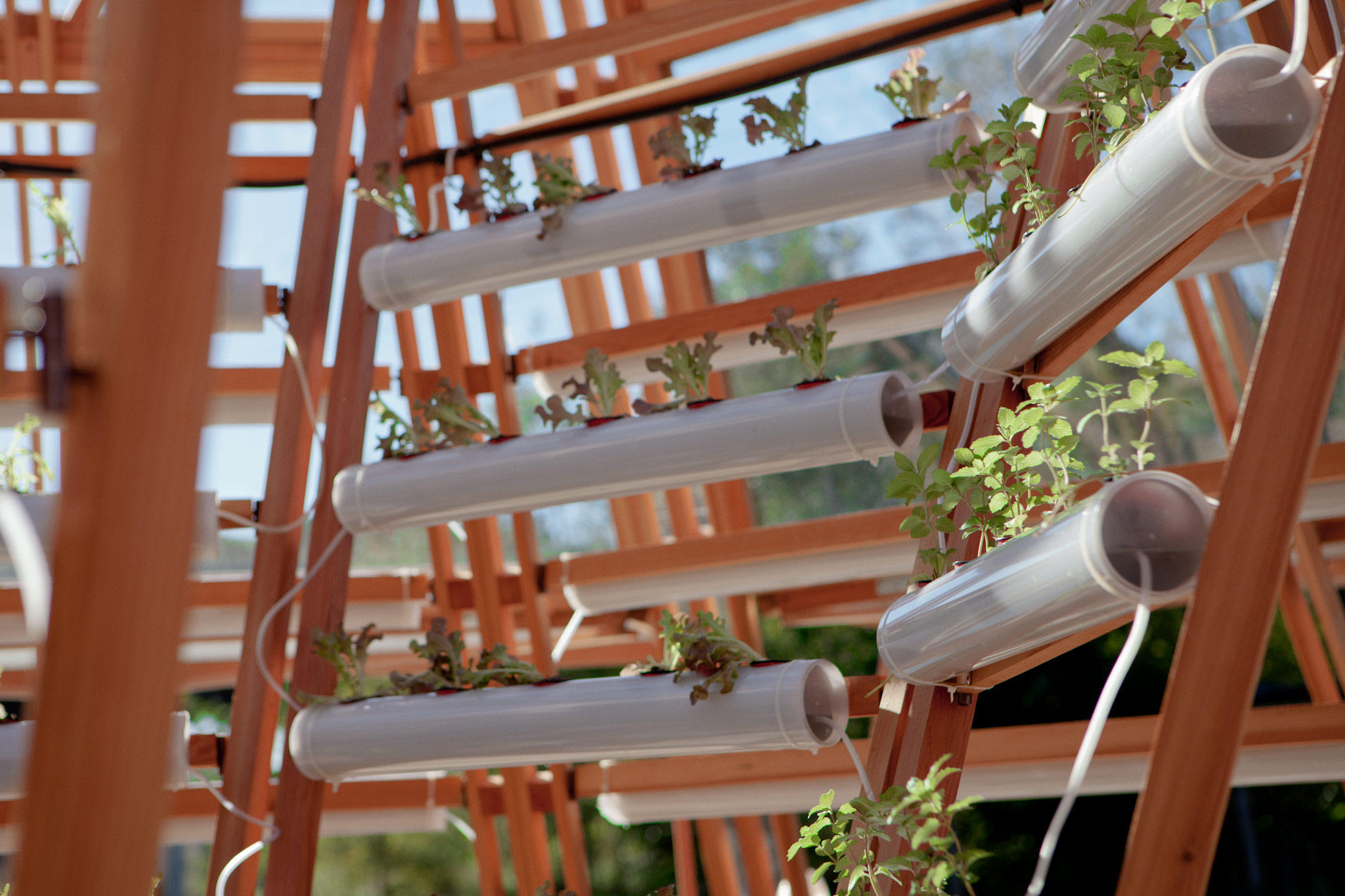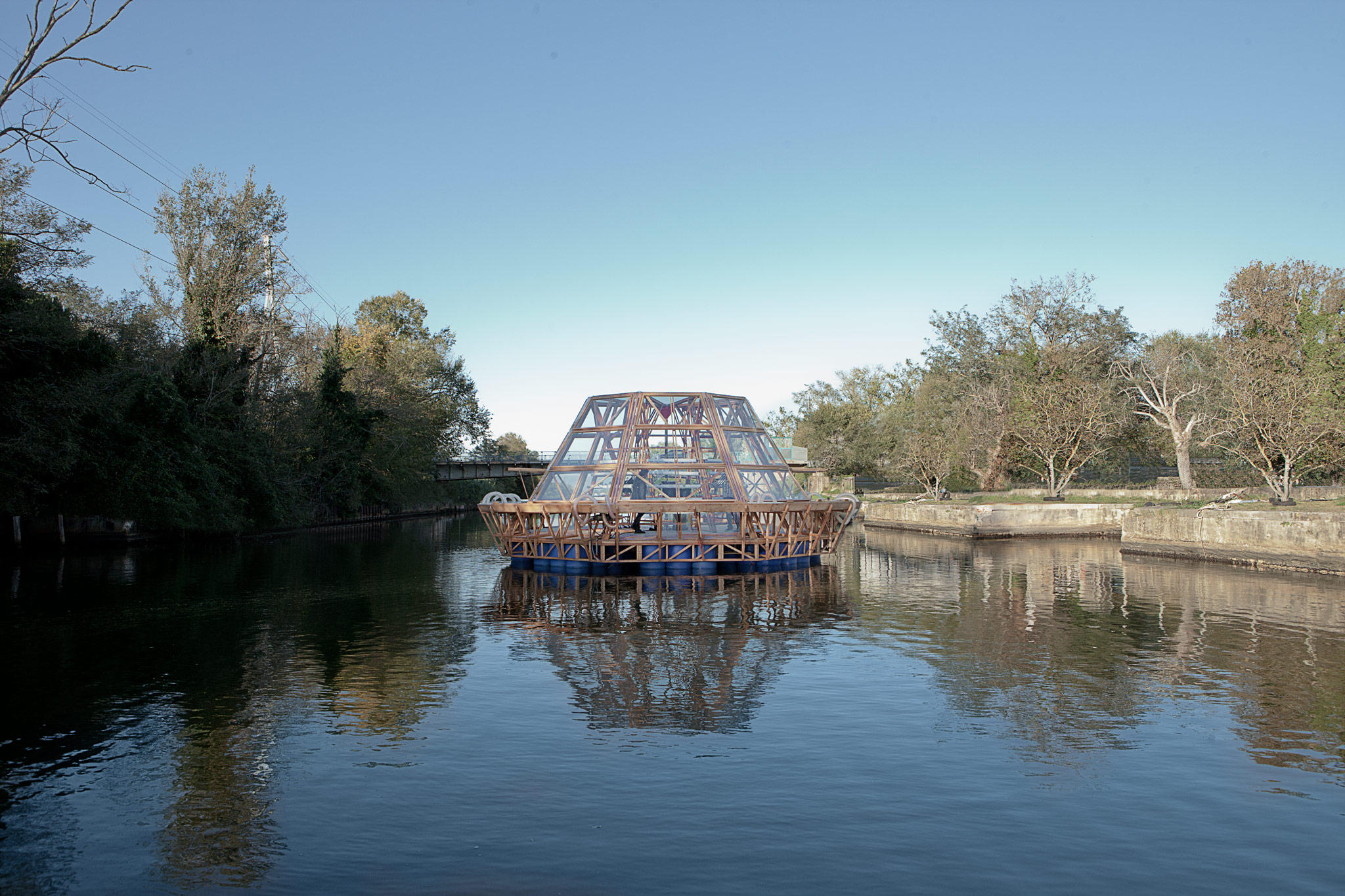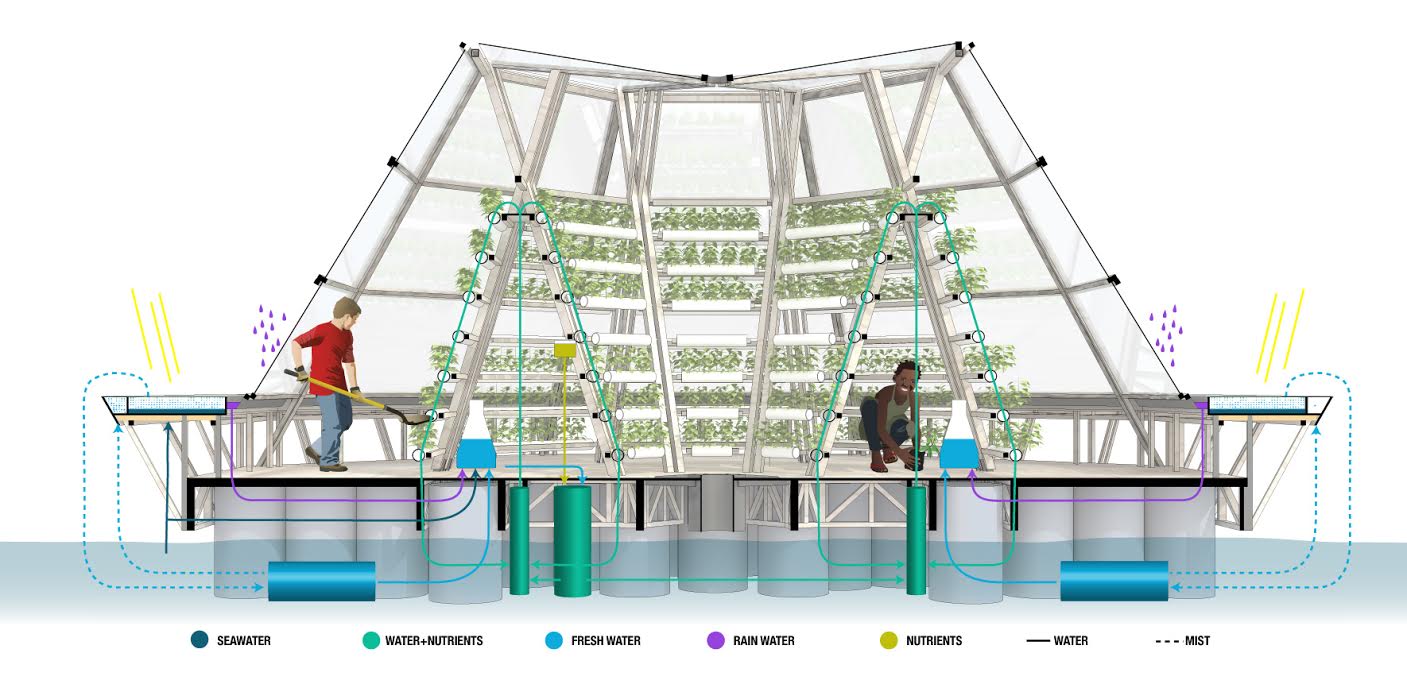The World Bank predicts the grow of world population to almost 10 billion by the next four decades, thus in 2050 the global demand for food is expected to be 60-70% higher than today. Scarcity of water and cultivable land are the main obstacles to meet the quantitative and qualitative shifts of the world’s demand. Most of the potentially arable land is concentrated in a few geographical areas, while in many countries with high population growth, such as North Africa and the Arabian Peninsula, it is extremely scarce.
In a world where resources are increasingly scarce, how will we produce the food we need, where will we get fresh water and where to find new areas for cultivation? A multidisciplinary team of architects and botanists offers a revolutionary answer to these questions. Jellyfish Barge is a floating agricultural greenhouse producing food without consuming land, fresh water or energy. It has been conceived for communities vulnerable to water and food scarcity and it is built with simple technologies and with low cost and recycled materials. Designed by the architects Antonio Girardi and Cristiana Favretto, Jellyfish Barge is a modular greenhouse mounted on a floating base, able to guarantee water and food security without impacting on existing resources. Appropriate strategies to provide access to food and water largely depend on cultural, social and economic conditions of referring communities. Successful, long-term solutions are those able to adapt to evolving situations and flexible to different needs of different areas. Thus, JFB has been conceived as a flexible construction using simple construction technologies and low cost and recycled materials. The structure consists of a wooden base of about 70 square meters, floating on 96 recycled plastic drums, held together by wooden reticular beams running along the perimeter and the radiuses of the octagon. The drums are screwed on the upper deck supporting the structure of the greenhouse and of the solar desalination units. Fresh water is provided by 7 solar stills arranged along the perimeter, designed by the environmental scientist Paolo Franceschetti. They can produce up to 150 liters/day of clean fresh water from salt, brackish or polluted water. Solar distillation is a natural phenomenon: in the seas, the sun’s energy evaporates water, which then falls as rain water. In Jellyfish Barge the solar desalination system replicates this phenomenon in small-scale, sucking moist air and forcing it to condense into drums in contact with the cold surface of the sea.
The low energy required to power fans and pumps is provided by photovoltaic panels integrated in the structure. The greenhouse incorporates an innovative hydroponic system. Hydroponics is a crop production technique using 70 % less water compared to traditional cultivation, thanks to the continuous re-use of water. In addition Jellyfish Barge uses about 15% of seawater, which is mixed with distilled water, ensuring even greater water efficiency. The system has an innovative automated system with remote monitoring and control.
